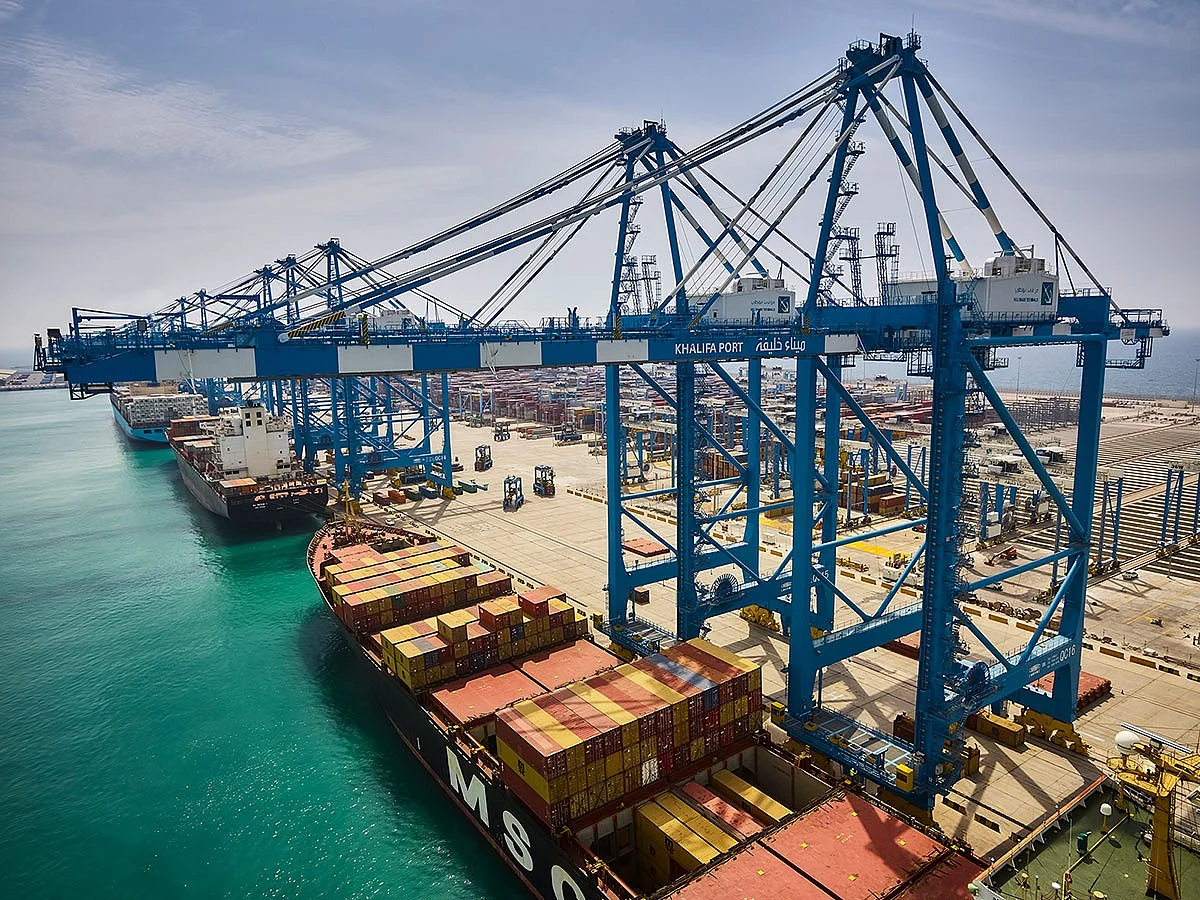
How Gulf Ports Are Managing Cyber Risk Amid Increasing Automation
Gulf ports are racing ahead with AI-driven berth scheduling, connected cranes, electric fleets, and IoT sensors everywhere. These smart-port innovations are boosting throughput by 20–30 per cent.
However, with increased automation comes serious cyber-risk. Globally, 69 per cent of cyber incidents hitting ports involve ransomware attacks, and in response, DP World invested $100 million in 2024 alone to upgrade security protocols - resulting in a 50 per cent reduction in vulnerabilities.
Recommended For YouWhen disaster strikes, port security chiefs face one non-negotiable question:“Did the ship sail on time?”
Smart ports face a big challenge: thousands of security alerts every day, and up to 80 per cent are false alarms. With so many alerts, most of them false, security teams risk missing genuine dangers and getting overwhelmed.
“Ports work in a world where speed and security are both critical. Intelligent filtering and what we call Deep Observability give teams only the data they need, not endless noise. The result: faster detection, quicker action, and smooth port operations. In port security, packets tell the real story,” Damian Wilk, General Manager for SEMEA, Gigamon, told Khaleej Times.
When something looks wrong, the system can take immediate but reversible action.“It might isolate a suspicious camera network or temporarily disable a badge reader. Security analysts only deal with the alerts that make it through all the filtering,” said Osama Alzoubi, MEA Vice President at Phosphorus.
More alerts don't mean better security. When teams get bombarded with warnings, most of them are false and they waste time on non-issues while real threats slip through.“The answer is being selective about which alerts matter. Good analysis combines threat intelligence with patterns of suspicious behaviour and known warning signs. This filters out the noise. Looking at network activity directly helps spot genuine problems faster,” said Dr. Emad Fahmy, Director of Systems Engineering for the Middle East at Netscout
In global trade hubs, even short delays can cause a chain reaction. Logs alone give a slow and often incomplete picture, forcing security teams to piece together events from scattered clues.
Packet-level monitoring provides a complete, tamper-proof record of network activity. This reveals suspicious behaviour as it happens, giving attackers less time to cause damage.“Working from this complete, reliable picture means investigations are often quicker and more accurate. Security teams can act with confidence and keep operations running smoothly with minimal disruption,” Fahmy said. For ports, that means solving problems fast and keeping goods moving, Wilk added.
“When you feed this information into automated detection systems, they can quickly dismiss false alarms and flag genuine threats for human review. This speed means you can contain problems within minutes, keeping port operations running smoothly,” Alzoubi said.
Modern ports mix old and new equipment. Decades-old cranes work alongside 5G-connected devices and smart sensors. Each new connection creates another potential entry point for attackers. Older machines often lack built-in security features, and with operations running round the clock, there's rarely time to update them without disrupting work.
“Having clear visibility across both IT and operational systems helps teams spot problems early. This includes equipment that's performing poorly or could be targeted. Real-time monitoring of network activity makes it possible to find and fix issues quickly, before they escalate,” Fahmy said.
To be effective, these tools must be fueled with clean, targeted data.“And since some critical devices don't generate logs at all, packet data becomes even more essential for complete visibility,” Wilk added.
Electric vehicle chargers, solar panels, and smart meters make ports greener and more efficient - but also create new entry points for hackers.“We've already seen attacks on energy infrastructure and connected devices in other industries. Attackers aim to cause disruption or establish long-term access. Without continuous packet-level monitoring, weaknesses in these systems can go unnoticed until it's too late,” Fahmy said.
“Compromised updates from equipment vendors could install backdoors in your systems. To handle these risks, you need continuous monitoring to find all connected devices, automated systems to update passwords and software, and network separation to contain any breaches,” Alzoubi said.
To boost cybersecurity at ports, Wilk recommends beginning by identifying and addressing coverage gaps across the entire network, including OT, IoT, and cloud environments. Many threats remain undetected due to visibility blind spots, making comprehensive, end-to-end observability essential. Equally important is ensuring that all cybersecurity and observability tools are fed high-quality, relevant network data.
Fahmy suggests a three-phased approach - map and secure, fortify and automate and test and train.“With comprehensive visibility and constant monitoring, ports replace uncertainty with uninterrupted operations,” he added.
“Set up dashboards to monitor key metrics like device uptime, how quickly you detect problems, and how long it takes to fix issues. This gives port leadership visibility into cybersecurity performance without interfering with cargo operations,” Alzoubi said.

Legal Disclaimer:
MENAFN provides the
information “as is” without warranty of any kind. We do not accept
any responsibility or liability for the accuracy, content, images,
videos, licenses, completeness, legality, or reliability of the information
contained in this article. If you have any complaints or copyright
issues related to this article, kindly contact the provider above.


















Comments
No comment